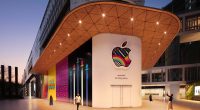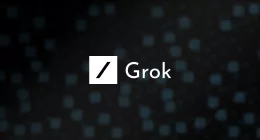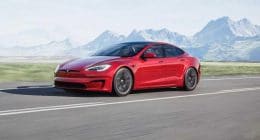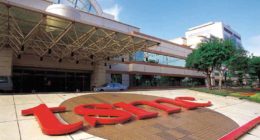Tesla launched its new ride-hailing service in the San Francisco Bay Area on July 31. The service is currently available in several major cities, including San Francisco, Berkeley, Oakland, Fremont, Hayward, and parts of San Jose. Currently, it is a limited pilot program and not open to the general public. Access has been granted by invitation only, with early users including Tesla employees, their families, investors, influencers, and select members of the public.
The company also released a map outlining the ride-hailing service area, which stretches roughly 70 miles across the Bay Area, from northern San Francisco down to central San Jose.
The service operates through Tesla’s own app, allowing users to request a ride from one of the company’s vehicles. The cars are powered by Tesla’s Full Self-Driving (Supervised) software, which uses advanced driver-assistance systems to control the vehicle. However, due to California state regulations, every ride currently includes a human safety driver seated behind the wheel to monitor the system and take control if needed.
Actually, the presence of a safety driver is not optional at this stage. Under California law, any company wishing to operate fully driverless commercial vehicles must receive special approval and permits from the California Department of Motor Vehicles (DMV) and the California Public Utilities Commission (CPUC). The Elon Musk-led EV giant has not yet applied for these permits. Instead, the company is operating under a ‘charter-party carrier’ license, which allows it to provide rides with a licensed human driver present.
This approach in California differs from what Tesla is doing in Austin (Texas), where the company has begun operating ride-hailing services using cars without anyone in the driver’s seat. In Austin, the company has placed a safety operator in the front passenger seat rather than the driver’s seat, as Texas regulations are more permissive for autonomous testing.
The development comes as Musk recently stated that the company’s Robotaxi platform could reach half the US population by the end of 2025. Even the billionaire considers autonomous driving as an important revenue stream that could offset slowing electric vehicle sales and support the company’s shift from a traditional car maker to a broader tech and robotics company.
Notably, San Francisco is already becoming a competitive space for autonomous vehicle companies. Waymo (Alphabet’s autonomous vehicle unit) began its ‘Waymo One Trusted Tester’ rollout in San Francisco in August 2021 and launched fully driverless public service in 2022. Recently (in May 2025), the company received approval from the California Public Utilities Commission (CPUC) to expand its robotaxi service to San Jose. Meanwhile, Amazon-owned Zoox has been testing its purpose-built, steering-wheel-free robotaxi around Foster City and SoMa since 2023, with plans for a full commercial launch in San Francisco in 2026.
The Tech Portal is published by Blue Box Media Private Limited. Our investors have no influence over our reporting. Read our full Ownership and Funding Disclosure →






